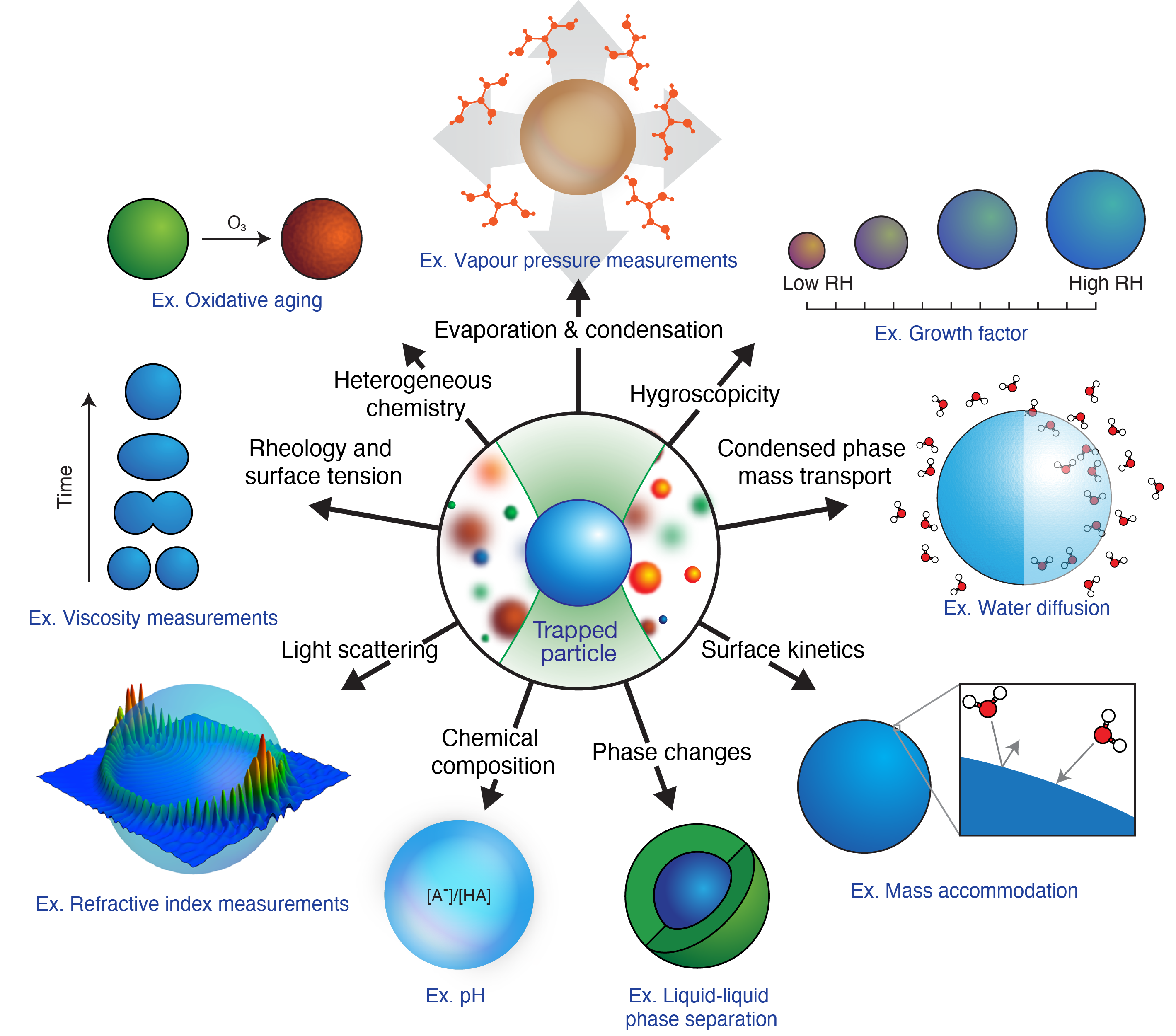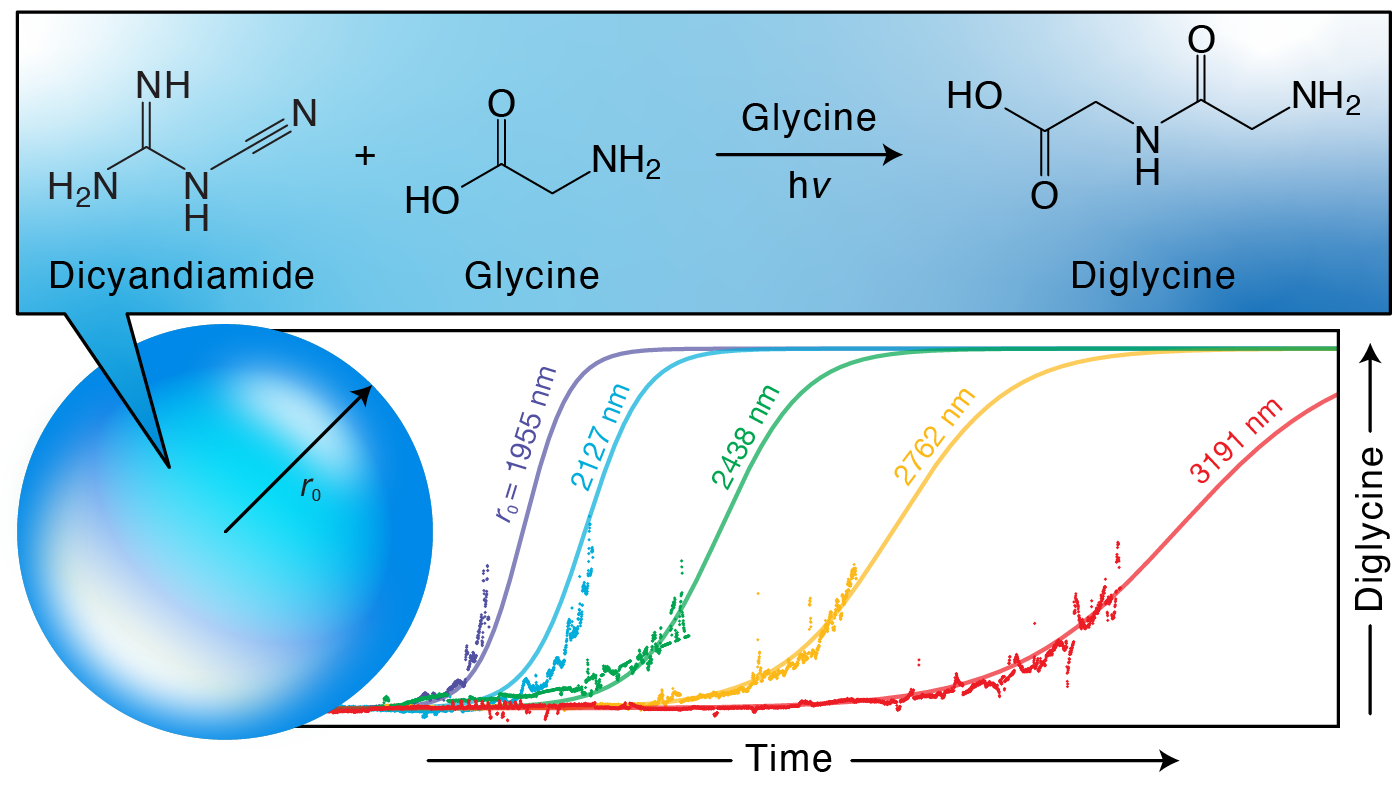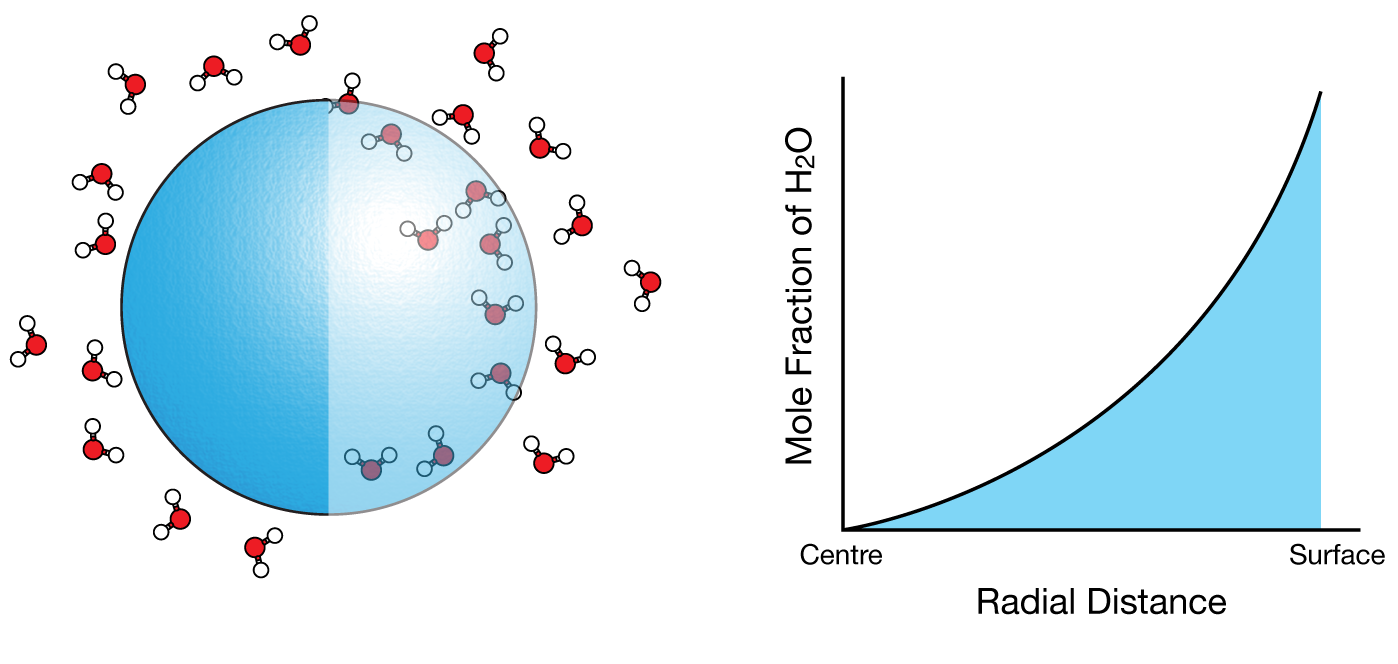Research Interests
The focus of our research program is (i) the development of optical trapping platforms for high-precision spectroscopic measurements of micron- and nanosized particles with applications across a broad spectrum of disciplines, and (ii) utilizing these platforms to address outstanding scientific questions within atmospheric aerosol science. These instruments are at the frontier of single particle measurements as they enable surface-free control of pico- and femtolitre volume particles across phase states and timescales that are inaccessible via bulk measurements. With these tools, we have been able to answer many key questions about condensed phase physics and chemistry in Earth’s atmosphere as we can directly interrogate important microphysical properties such as hygroscopic growth, surface tension, viscosity, liquid–liquid equilibrium, and atmospheric multiphase chemistry.

For a review of aerosol optical trapping see: Rafferty, Vennes, Bain, and Preston (2023).
Development of Aerosol Optical Traps
 Conventional optical tweezers were first introduced by Ashkin et al. and rely on using a focused laser beam to trap microscopic objects. This type of optical trap has found extensive use in biology and, more recently, has been used to study aerosol particles. The animation to the right shows a single aerosol droplet being trapped by optical tweezers.
Conventional optical tweezers were first introduced by Ashkin et al. and rely on using a focused laser beam to trap microscopic objects. This type of optical trap has found extensive use in biology and, more recently, has been used to study aerosol particles. The animation to the right shows a single aerosol droplet being trapped by optical tweezers.
Spherical aerosol particles can act as high-quality factor optical cavities that can support electromagnetic whispering gallery modes (WGMs). When single aerosol particles are held using optical tweezers, spontaneous Raman scattering can be enhanced at wavelengths that are commensurate with WGM resonances. As WGM resonances are very sensitive to both particle size and composition, single particles can be accurately characterized if the resonance positions are fitted with a suitable model. For instance, the radius of a 4 micrometer particle can be determined with an uncertainty of ± 1 nm by comparing observed resonances to resonances calculated using Mie theory.

Left: the incident beam satisfies the resonance condition and the mode is excited. Right: the size or refractive index of the particle is changed slightly shifting the resonance and the incident beam no longer excites the whispering gallery mode. Such sensitivity allows the refractive index and size to be determined with high precision in aerosol particles.
For examples of the characterization aspect of this work see: Preston and Reid (2015), Bain, Raffery, and Preston (2018), and Vennes and Preston (2019), as well as our resonance fitting code found here.
For examples of instrument development see: Rafferty and Preston (2018) and Bain and Preston (2019).
Reaction Acceleration in Microdroplets
Why are certain reaction rates greatly accelerated within microdroplets compared to their macroscopic counterparts? We have begun to explore this question in the context of prebiotic chemistry by performing kinetic experiments to investigate in-droplet chemical transformations involving hydrogen cyanide and its polymers. These cyano building blocks, present on early Earth, can provide essential components for proteins and nucleic acids.
Above: The photochemical formation of diglycine from glycine in the presence of dicyandiamide. A strong size-dependence is observed in single droplet measurements. See Logozzo et al. (2024) for details.
Surface Tension & Optical Deformation
Surface tension can impact the growth of atmospheric aerosol particles and is expected to influence their activation as cloud droplets. Using two counter-propagating laser beams which trap a single particle at their common focal point, we are able to hold and optically deform single aerosol droplets. Tension measurements are realized by characterizing splitting in WGMs that appear as sharp peaks in cavity-enhanced Raman scattering spectra. The optical trapping platform allows for aerosol particles to be studied in a contact-free and relative humidity-controlled environment that gives us access to metastable states (e.g. supersaturated) that are often found in the atmosphere.
Left: Schematic of the dual beam optical trap. Right: Cavity-enhanced Raman scattering spectra containing split WGMs used to characterize deformation.
For an example of this work see: Rafferty, Gorkowski, Zuend, and Preston (2019).
Optical Properties of Aerosol Particles
The wavelength-dependent complex refractive index is a key quantity in our understanding of how light is absorbed and scattered by aqueous droplets in the atmosphere. We have developed a method for measuring the real and imaginary parts of the refractive index of single aerosol particles through the use of a dual beam optical trap. Absorptivity is measured by heating and cooling trapped droplets and can be related to the imaginary part of the refractive index. Cavity-enhanced Raman spectroscopy allows for the retrieval of the real part of the refractive index across a range of wavelengths. The Kramers-Kronig relation then allows for these two measurements to be connected and provides a complete description of the complex refractive index of the aqueous droplet as a function of both wavelength and relative humidity. The measurements can greatly improve the accuracy with which we can calculate the attenuation and scattering of solar radiation in the atmosphere.
(a) An example highlighting the sensitivity of WGMs in light scattering spectra to small changes in refractive index, a property that enables precise measurement of the refractive index of a single particle. (b) Stratospheric aerosol (aqueous sulfuric acid and nitric acid) measured across a broad range of temperatures, and (c) aqueous inorganic particles measured across a wide range of RHs. Both (b) and (c) contain predictions from the effective oscillator model that we have developed in Bain, Rafferty, and Preston (2019) and Bain and Preston (2020).
Water Transport in High Viscosity Particles
Highly-viscous, amorphous or "glassy" particles have recently come to be recognized as being extremely important in our atmosphere. The uptake of water by these particles greatly affects their behaviour as cloud condensation nuclei and is an area of intense research within the atmospheric aerosol community. Furthermore, the high viscosity of glassy particles can inhibit heterogeneous chemical reactions.
Above: The uptake of water by a glassy particle. Can shifts in whispering gallery modes that occur during this process allow us to determine the concentration profile of water at any time and subsequently understand the diffusion of water in these particles?
For examples of this work see: Moridnejad, Preston, and Krieger (2017), Wallace, Price, Davies, and Preston (2021), and Preston and Zuend (2022).